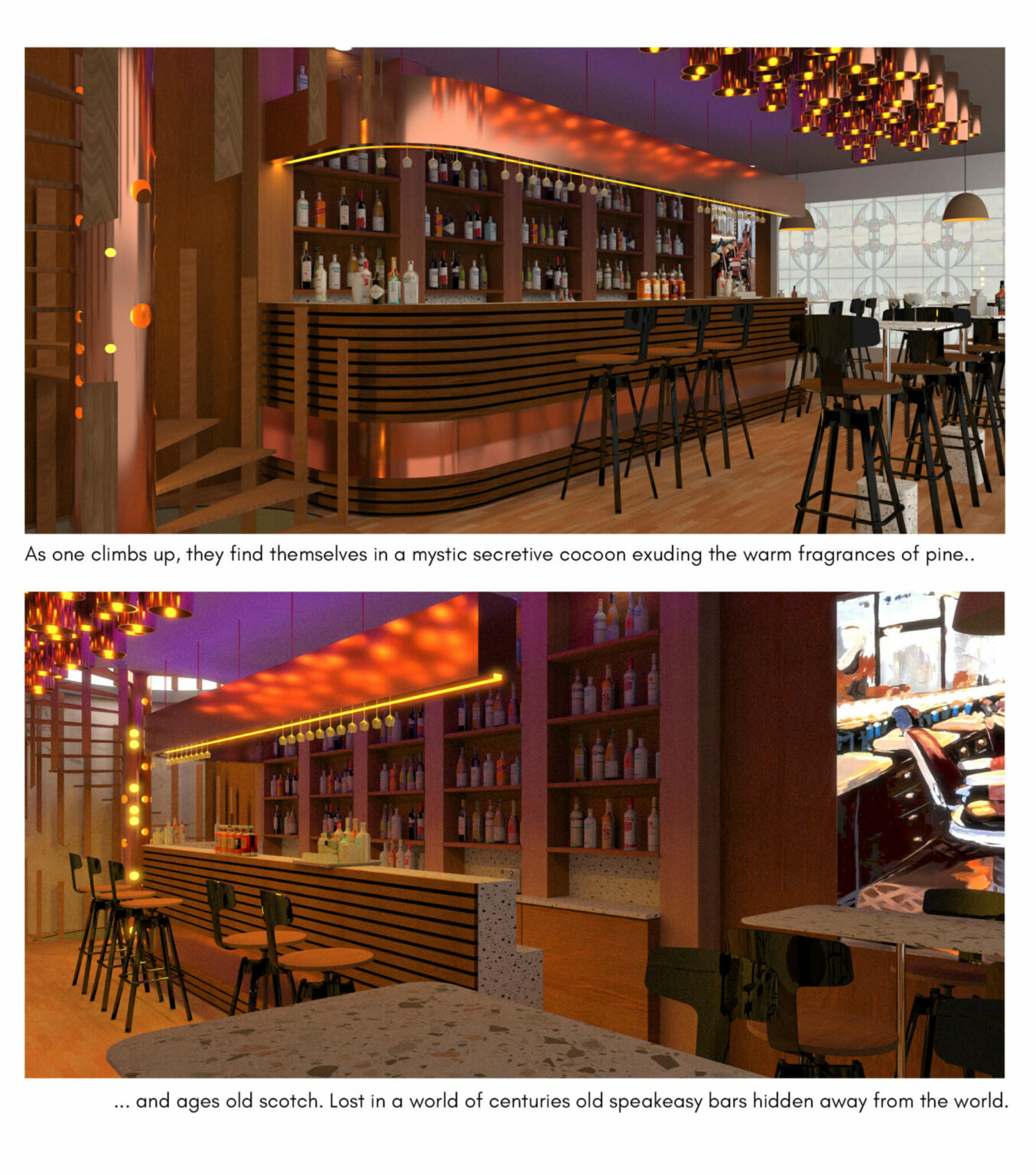Anika Jain (She/ Her)

An interior architect by profession and a graphic designer by passion, I enjoy travelling to new countries, to stare at art and architecture.
I associate my practice with a similar approach, a little bit of everything. I truly believe that every aspect, no matter how seemingly insignificant, contributes to the overall atmosphere and functionality of a space. I am a multi-disciplinary designer with a meticulous approach to design and functionality, considering every nuance to achieve harmony and balance. I strive to imagine and re-imagine spaces deep rooted in narrative concepts. Having worked professionally for 2 years in residential design, combined with my education in architecture and interior design, I am seeking a career in which high end residential design is in focus with interior architecture as the realm.
My passion for design transcends interior design, apart from being formerly educated in the field of architecture, I also hold an ardent interest in graphic and communication design. I continue to practice graphic design through the avenue of a branding studio run via social media and strive to practice my passion for building design as an interior architect.
It would be a pleasure to connect and chat more about the projects if you’d like. Contact me on LinkedIn or Instgram

OAK speakeasy
Slice: An intervention in Sauchiehall Street
Sauchiehall Street is in a state of decline. The retail and commercial sector on the street took a major hit after the pandemic, weakening the commercial hub in its bones. Nevertheless, with the right strategies and interventions the street will rise from its ashes. The irony that the fires on the street have a major contribution to its decline, is not lost to me. Even in its decline, certainly, there are a few key factors that keep the street going. One of them is its character, and while some of it is lost, the core of it still lives on in small fragments. One of these fragments is the block with the Tea Rooms. This block still sees people gathering around the metal benches, to talk, eat and simply socialize. The typologies around the block thrive off these interactions and gatherings. Barbershops traditionally were also places that men used to gather and congregate, VGO Barbershop lives on celebrating this quality of the street.
While observing the Slice, I could not help but notice how this character very seamlessly translates into the transitionary spaces formed by the street furniture, the canopies, and frontages of different typologies and in fact, the barbershop itself. The upper floor of this unit operates as a nail salon and the barbershop forms the thoroughfare to reach the upstairs area.
The idea for the intervention is to retain the transitionary quality of the barbershop for the upper floor and replace the poor performing nail salon with a speakeasy bar to activate the evenings in this part of the street. Symbolism is of key importance in this project, so the vertical circulation will be replaced by a spiral staircase inspired from the barber’s pole and its gruesome history in relation to barbershops. The materials used will stem from the themes of sustainability and keeping in mind their usage will be designed keeping in mind the longevity of design and material.

The Lion Chambers: at golden hour
Eclecticism in the modern Scottish Home
“Now that we view the Modern movement more historically and in the light of a greater range of alternatives which now flourish, we may well come to see Modernismus to some degree as just another historic style. (Calloway S., Twentieth Century Decoration, 27) Calloway suggests here that Modernism is essentially a reflection of the historic styles preceding it. As a movement, modernism took shape in different parts of the world at different times, however now as the world keeps becoming smaller through the bridges of technology and travel, one can notice the Scandinavian Functionalism influencing the modern architectural style in heavy volumes. This influence is so overpowering that it takes away from the idea of spacemaking in reference to the context. Spaces no longer reflect the identity of the broader context around them. Along with the loss of place identity, some part of history and culture of that place is also lost in the architectural style.
This study examines how architectural styles can influence the contemporary Scottish style in order to preserve and reflect the rich architectural heritage of the country. This is done by analysing different styles all over the world, in particular, the styles that have been iconic to Scottish residences. The main focus of this study are elements of the different styles and their materiality. Eclecticism is a style of architecture and design that combines different architectural styles in the form of their principles, elements and key design processes to create a unique refined style. A similar approach was taken in this study where similar functional spaces of different eras were studied together to layer certain design details. Through this process of layering and analysing, the design detail was fragmented, and a new detail was formed using those fragments as key parts.
As the Glasgow City Council puts in effect its living strategy for Central Glasgow, this study envisions its findings and new design details to be realised in the upper floors of the historic and iconic buildings, as they are converted into residences. The study explores the conversion of the upper floors of Lion Chambers into residential quarters as a starting point.

The Modern Ornament

the Toolkit

The Living Area













































